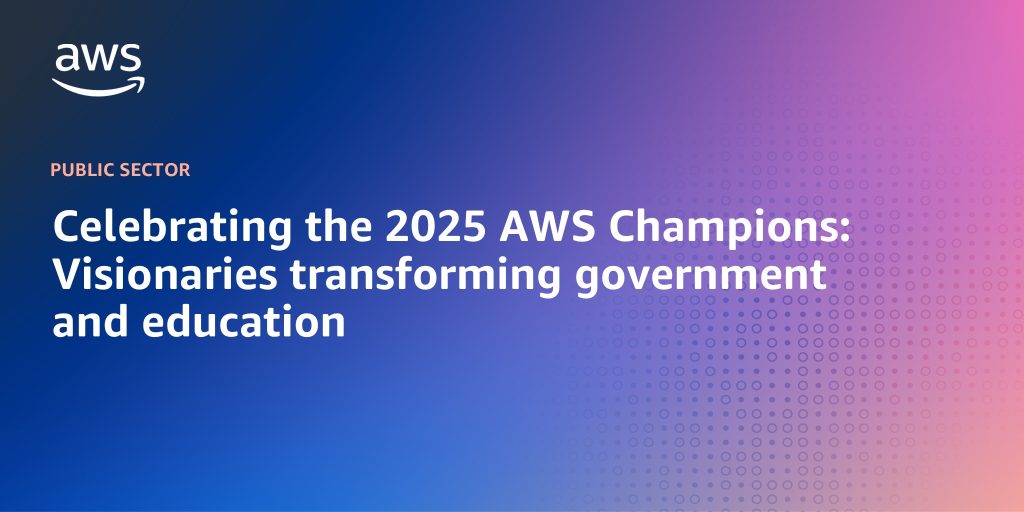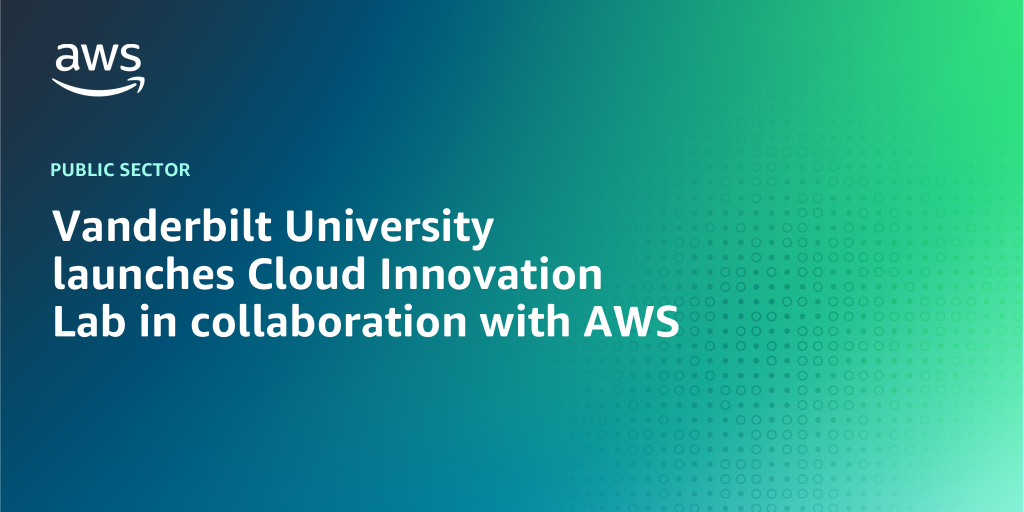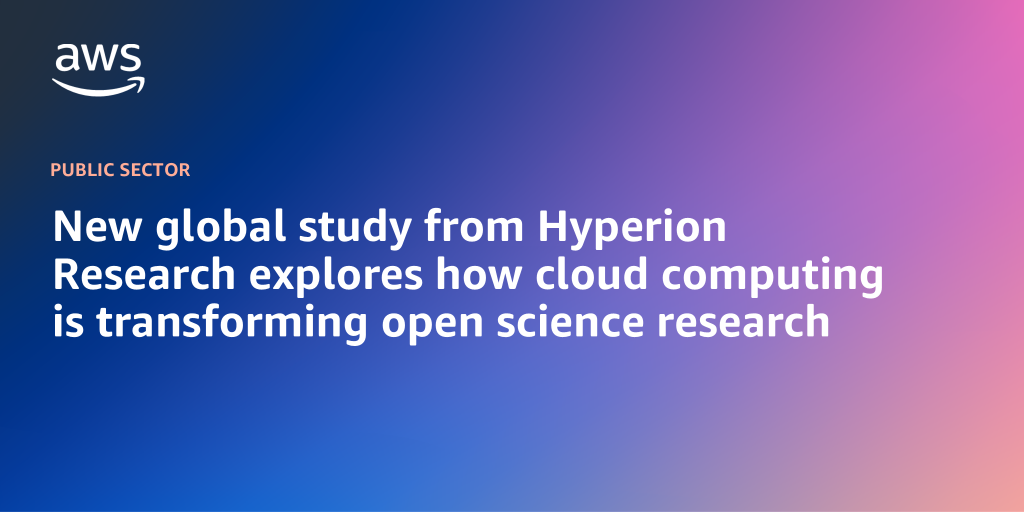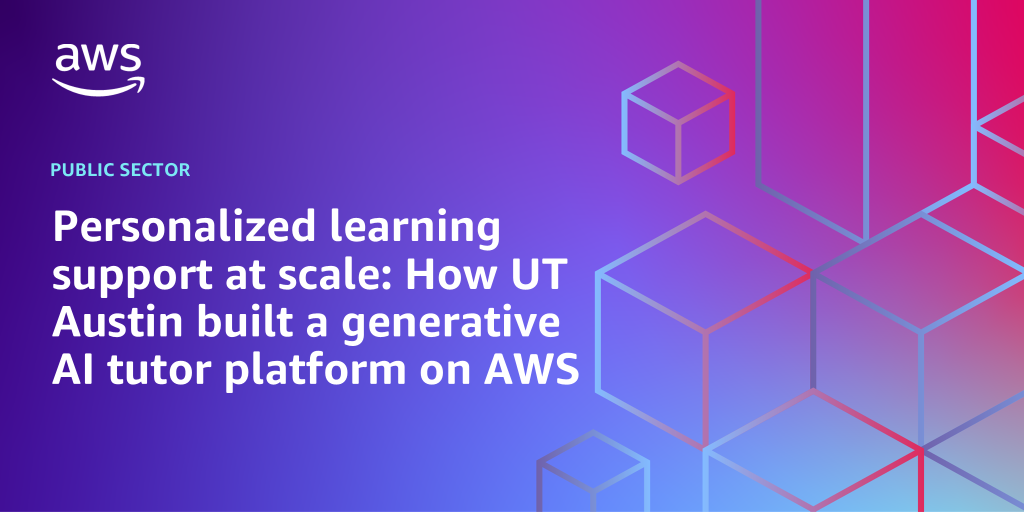AWS Public Sector Blog
Category: Higher education
Highlights from the 2025 AWS Imagine Education, State, and Local Government keynote
The eighth annual AWS Imagine conference for education, state, and local government leaders kicked off in Chicago today. Taking place in the Windy City for the first time, attendees will partake in a day-and-a-half of programming that explores how education and government customers can innovate on behalf of those they serve. Kim Majerus, AWS Vice President of Global Education and US State and Local Government, delivered the keynote address, which focused on how AWS is helping reframe, retrain, and reenergize public sector organizations. Read this post to learn more about some of the highlights from today’s keynote.
Claude for Education now available in AWS Marketplace
Imagine equipping every student with an adaptive study companion, faculty with an AI assistant for creating engaging teaching materials, and staff with an AI collaborator for tracking and analyzing student progress—that’s what Anthropic is offering with Claude for Education. Universities can now equip their academic community with this educational version of Claude while benefiting from the streamlined procurement and billing benefits of AWS. Read this post to learn more.
Celebrating the 2025 AWS Champions: Visionaries transforming government and education
The Center for Digital Government and the Center for Digital Education (CDG/CDE) and AWS Champions Awards honor AWS customers who are setting new standards for innovation in the public sector. Curated by the CDG/CDE, this annual awards program recognizes visionary public and private sector organizations across state and local government (SLG), K–12, and higher education that are using the power of cloud computing to deliver better, faster, and more inclusive services.
Vanderbilt University launches Cloud Innovation Lab in collaboration with AWS
Amazon Web Services (AWS) and Vanderbilt University are excited to announce the launch of the Vanderbilt Cloud Innovation Lab (CIL) for Libraries and Applied Digital Preservation, powered by AWS. This new creative collaboration marks a significant milestone in the advancement of digital preservation technologies and cloud-based solutions.
New global study from Hyperion Research explores how cloud computing is transforming open science research
In an era where scientific discovery transcends borders, cloud computing is helping advance how researchers collaborate and innovate across the globe. Now available for download, The Value of Utilizing Cloud Service Providers for Open Science Research report—produced by Hyperion Research and sponsored by AWS— explores how and why researchers use cloud to accelerate open science research. Read this post to learn more.
Personalized learning support at scale: How UT Austin built a generative AI tutor platform on AWS
Building on a commitment to using innovative technologies to enhance the learning experience, the University of Texas at Austin (UT Austin) collaborated with AWS to develop UT Sage, a faculty-guided, generative AI tutor platform. UT Sage provides conversational course-related support on-demand while aligning with responsible AI frameworks and preserving the essential connection between faculty and students. In this post, learn how UT Austin worked with the AWS Generative AI Innovation Center to build UT Sage and what this experience can teach other institutions navigating the promise and responsibility of AI in higher education.
University of Arkansas – Pulaski Tech increases campus app engagement by 253% with generative AI from AWS Partner Modo Labs
To support a student population that includes many nontraditional learners, such as working adults, caregivers, and first-generation learners, the University of Arkansas – Pulaski Technical College (UA-PTC) needed a faster and more intuitive way to deliver campus information. UA-PTC worked with Modo Labs, an AWS Partner, to launch MyAgent, a generative artificial intelligence agent built on AWS that delivers real-time, verified answers to conversational student questions directly within the college’s Modo-powered app.
Pearson at AWS DC Summit 2025: Transforming education through AI-powered learning solutions
During the 2025 AWS Summit in Washington, DC keynote address, Amazon Web Services (AWS) and Pearson showcased the strength of their expanded collaboration to accelerate the development of AI-powered, personalized learning solutions.
Macquarie University accelerates cloud transformation with AWS
Macquarie University today announced a significant advancement in its digital transformation journey, partnering with Amazon Web Services (AWS) to create a modern, cloud-first environment that will revolutionize its technology infrastructure and services delivery.
Using generative AI to help dog owners make smarter health decisions
What if you could get trusted answers from a leading veterinary college, any time of day, from anywhere? That’s the idea behind Big Red Bark Chat, a generative AI-powered chatbot developed by the Cornell Richard P. Riney Canine Health Center (RCHC) at the Cornell University College of Veterinary Medicine, in collaboration with AWS.









